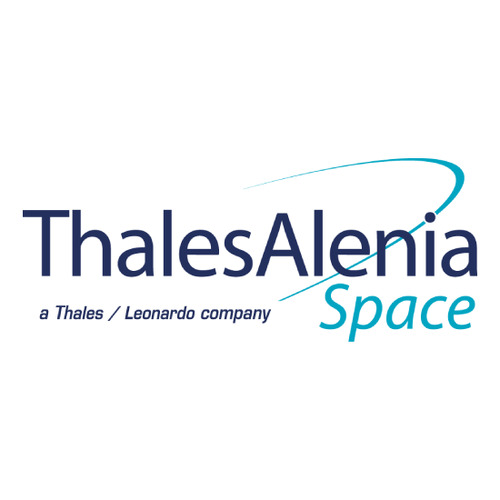2015, a climatic year!

From November 30 to December 11, 2015, Paris will host the 21st climate change conference, COP21 (21st Session of the Conference of the Parties to the United National Framework Convention on Climate Change). COP21 will be one of the largest international conferences ever organized about environmental management. The task will be daunting indeed, since the challenge is to reach, for the first time, a universal agreement enabling us to fight effectively against climate change and carbon emissions. After playing a significant role in several development projects for Copernicus services (oceanography, atmospheric studies), Thales Alenia Space has now teamed up with the French climate and environment lab (Laboratoire Français du Climat et de l’Environnement) to sponsor an industry chair and demonstrate the decisive role played by spaceborne systems in monitoring greenhouse gases. Involved in ESA's upcoming coastal environment data processing center, the company is also leading a regional competitiveness cluster for risk management. Three satellites dedicated to the climate and the environment will be launched this year, all built by Thales Alenia Space: MSG-4, Jason-3 and Sentinel 3A.
Weather forecasts: a Net favorite
Do you know that one of the most asked questions on the Internet is: what's the weather tomorrow? Several generations of geostationary weather satellites have come along to give increasingly accurate information to Europeans. The three generations of Meteosat satellites were all built by Thales Alenia Space as prime contractor for the European Space Agency (ESA) and Eumetsat. After building seven first-generation Meteosat satellites and four second-generation models (MSG), Thales Alenia Space will make six Meteosat Third Generation (MTG) satellites, four imaging models and two atmospheric sounders, built in conjunction with Germany company OHB.
About MSG-4

The fourth and last second-generation satellite, MSG-4, is slated for launch in July 2015. This generation has largely contributed to improved analysis of weather data. These spin-stabilized satellites, like the previous generation, rotating at 100 rpm, incorporate a number of technological innovations. Meteorologists benefit from higher quality images due to the significant increase in the number of observation channels, and better radiometric performance along with shorter revisit cycles.
Towards more accurate meteorology

Because of Meteosat technologies, European meteorology has improved with each decade. On the first-generation Meteosat, images were updated every 30 minutes, a figure that fell to 15 minutes on the second generation. With MTG (Meteosat Third Generation), images are now refreshed every 10 minutes, making weather forecasts increasingly reliable.
Jason-3, an eye on the oceans

Jason-3 is an operational oceanographic satellite, built within the scope of a quadripartite collaboration between Eumetsat, NOAA, and the French (CNES) and American (NASA) space agencies. Set for launch in July 2015, it will ensure the continuity of high-precision oceanic topography measurements, following on TOPEX/Poseidon, Jason 1, and Jason-2, still operational in orbit. It will provide the same level of accuracy as Jason-2 for ocean measurements, including coastal zones and lakes and other bodies of water. Thales Alenia Space is the industrial architect for this program.
The TOPEX/Poseidon and Jason missions represent the "cream of the crop" in altimetry for oceanography. This program also perfectly illustrates the successful partnership between the United States and France. These are real baseline missions, providing measurements of ocean height as well as changes since the early 1990s. The Poseidon altimeter, built by Thales Alenia Space, played a key role, giving climatologists vital information on our oceans. Oceanography has always been a core application at Thales Alenia Space, that is the world leader in altimetry, radar imaging and multispectral optical instruments
Copernicus: Space Sentinels
Sentinel-3A is the next ESA environmental management satellite. Scheduled for launch in autumn 2015, it is part of Europe's ambitious Copernicus program.

1 program, 6 missions
The family of “Sentinels” comprises six series of satellites or instruments: Sentinel-1 will ensure continuity with the radar data from ERS and Envisat; Sentinel-2 and -3 are dedicated to surveillance of land and oceans; The Sentinel-4 and -5 instruments are designed for meteorology and climatology missions; and Sentinel-6 will provide operational continuity with the Jason altimetry missions. Thales Alenia Space is prime contractor for the Sentinel-1 and -3 missions (each including 2 satellites), and will also provide the ground segment on the second mission, and two instruments for Sentinel-6.
Technological challenges and innovations
These operational missions involve several hundred partners from industry. The Sentinels are state-of-the-art satellites, combining reliability and effectiveness, and will meet the expectations of many different users. For example, Sentinel-3 will carry four payloads in a highly optimized space: an altimeter connected to a microwave radiometer for surface topography, and two instruments, each independently measuring the surface temperature and color of oceans. The Sentinel satellites are also designed to self-destruct in an atmospheric reentry at the end of their mission.
Photos copyrights: MSG-4 © Cedric SAMSON; Jason-3 © CNES - David DUCROS; MTG & Sentinel-3A © Master Image Programmes.

